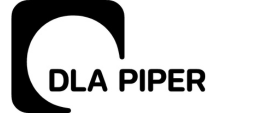The Hungarian Parliament adopted the bill on Hungarian architecture on 12 December 2023, and the Hungarian Architecture Act was officially published 10 days later. The date of entry into force is different for certain sections of the Act, namely 30 December 2023, 1 October 2024, 1 January 2026 and finally 1 July 2027.
As the Act will create a transparent and coherent regulatory framework instead of the currently fragmented regulatory system by repealing the act on the professional chambers of designers, professional engineers and architects, the act on the professional chambers of the built environment, the act on the development and protection of the built environment and the act on the protection of the urban landscape, it is important to review the steps of its entry into force.
- 30 December 2023
The act on the acceleration and simplification of the implementation of investments of priority national economic importance was repealed, however, it was recodified with some amendments as part of the unified Hungarian Architecture Act. Amendments to act on national property were declared, as per the provision of the Hungarian Architecture Act, the "public beaches of Lake Balaton" are introduced as new national assets (owned by the state or the municipality).
Amendments to act on the spatial planning plans of Hungary and certain priority regions were made. In addition, some national amendments for the Budapest agglomeration have also entered into force as of this day.
- 1 October 2024
The majority of the Hungarian Architecture Act will enter into force from 1 October 2024. According to the drafters of the act, these are the provisions of the act that will result in the "dawn of the Hungarian architectural reform era". The new legislation encompasses not only general architectural matters but also a range of related regulations pertaining to urban landscape preservation, cultural heritage protection, and advertising activities.
A notable alteration in the building permit process is the transformation of the simple notification of building activity into an acknowledgment procedure under the new Act. This mandates that within a 15-day period, the building authority will oversee adherence to relevant regulations and take measures to halt any unlawful activity if detected. Anticipated revisions in the occupancy procedure include a significant requirement wherein the architect's declaration becomes obligatory for the issuance of occupancy permits in specific cases Furthermore, the Act mandates compulsory designers' liability insurance for all building and landscaping projects. The regulation of this insurance will be overseen by a government decree aimed at ensuring developers' effective protection.
The aim of the new legislation is to redirect new property developments toward the underutilized existing older property stock rather than expanding into new property areas on the outskirts of Hungarian cities. This is facilitated by the implementation of a three-tier system of chief architects with strengthened competencies. Additionally, the responsibilities of municipal planning councils will be expanded, enabling them to intervene in new developments to enhance the urban landscape.
- 1 January 2026
The National Register of the Building Industry will be introduced. Within the framework of this register, the electronic documentation systems and applications are operated and used for the security of supply of construction materials and transparency, such as a construction materials database, a construction product database, a declaration of performance database, a construction cost database; and any other database as may be specified by Government Decree.
- 1 July 2027
Two sets of provisions would enter into force from this date, the legislator intends to abolish the role of the county councils in drawing up spatial plans, and this type of spatial plan would be phased out and replaced by the national spatial plan. The drafters of the law justify this on the grounds of the development of spatial information technology; they hope that from this point onwards it will be possible to determine land use from a national centre to the nearest plot subdivision. The necessary "overlapping" of previous land-use plans due to imprecision of scale will be avoided from the date indicated.
The Hungarian Architecture Act is currently the most important piece of legislation in the field of construction law. Following thorough review and critical analysis by professional organizations, the industry welcomes the legislative change. However, given that the new act entails a reinterpretation of the existing framework of building laws and regulations, an adjustment period and some minor challenges in practice are anticipated.
By Denes Glavatity, Associate, KCG Partners Law Firm




